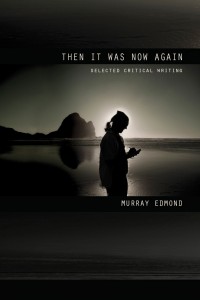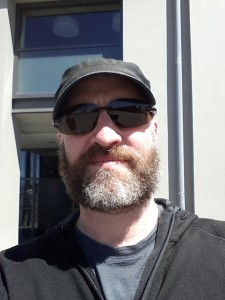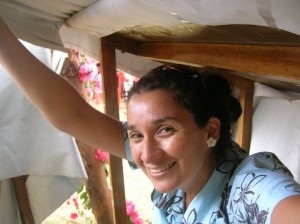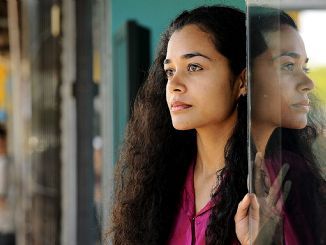Editorial
Welcome to the fourth edition of NUTS NZ – the Newsletter for University Theatre Studies New Zealand. The purpose of the newsletter is to help us communicate more effectively as a community of scholars interested in Theatre and Performance.
The NZ Universities Committee for Theatre/Performance Research was held at Victoria University on 10 November 2014. One of the issues that was discussed was the PBRF (Performance-Based Research Fund) exercise and the challenges we face as a community in how performance research is evaluated. As Sharon Mazer reported in her minutes from the meeting, the PBRF privileges ‘international’ research, whilst theatre and performance research projects are intrinsically local. According to Sharon, one way to position theatre work internationally is to invite colleagues from other universities to review and/or to incorporate critical analyses of performances for publication in scholarly journals. NUTS NZ is here to help coordinate and publicise any collaborative initiatives in relation to the PBRF, so please let us know how we can help.
We have an interesting selection of stories and news items for you in this final issue of NUTS NZ for 2014. We will back next year and we hope you will send us information on any upcoming events or initiatives that you think our wider theatre and academic community should be informed about. Please refer to the important dates below. We plan to circulate our fifth issue in mid-March 2015, and we will need items of news by 27 February. As always, submissions should be sent to the NUTS NZ editor Jane Marshall: j.g.marshall@massey.ac.nz
|
Newsletter Issue |
Information Required by |
Date of Circulation |
|
Issue 5 |
27 February 2015 |
13 March 2015 |
|
Issue 6 |
1 May 2015 |
15 May 2015 |
|
Issue 7 |
31 July 2015 |
14 August 2015 |
|
Issue 8 |
30 October 2015 |
13 November 2015 |
We have enjoyed curating NUTS NZ this year and look forward to catching up with you all in 2015. Until then, have a great christmas and a very happy and relaxing new year.
Kind regards,
NUTS NZ editors: Jane Marshall and Rand Hazou.
NUTS People
In each edition of NUTS NZ we profile an academic and a postgraduate student to show case “our people” and their current research/interests. It is our pleasure to be profiling Senior Lecturer James McKinnon and postgraduate student Moira Fortin from Victoria University. NUTS NZ asked each of them to answer the following questions:
- What is your research about?
- What theatre/performances have you seen recently?
- What have you been reading lately?
James McKinnon, Senior Lecturer & Theatre Programme Director, School of English, Film, Theatre, and Media Studies
Research: My doctoral research focused on how Canadian playwrights adapt and appropriate Shakespeare and Chekhov, and how their audiences respond. Since Canadian Chekhov adaptation does not align especially well with the strategic priorities of Victoria University, my interests have changed over the last few years to reflect my new context. My current research still deals with adaptation, but more as a fundamental skill combining creative and critical processes, than a special form of playwriting, but as a general form of creativity. If adaptation – i.e., putting familiar materials to new uses to solve new problems – is not a form of “uncreative” copying but an essential aspect of all creativity, this has big implications for how we teach theatre and literature: instead of stressing Shakespeare’s “originality,” for example, what we should be focusing on is how Shakespeare adapted existing materials to make his plays. Why? Because if we teach people that Shakespeare’s genius was his originality, it sends the message that creativity is a mysterious, innate gift that only a few geniuses are born with; but if we look at Hamlet not as a uniquely original work of art, but as a clever adaptation of an Old Norse epic poem, then we can use it to learn how to become creative.
Theatre: Binge Culture Collective’s Break Up (We Need to Talk) stands out in my mind as a unique and powerful performance experience. As a six hour, improvised durational performance, it puts huge demands on the performers, but the company was careful to make the experience “fun” for spectators by encouraging us to Tweet during the play, or come and go as we pleased, or follow the performance on a live stream. As a result, I was able to appreciate how much the actors were working without having to “work” myself – if I got bored, I could check the Twitter feed for a witty comment or go out for a beer, and when I came back I could jump right back in, my appreciation for the actors growing as I became aware how the performance had affected them in my absence. It transformed the theatre experience from aesthetic appreciation into something more like the excitement of athletic competition, with all of its risks and unpredictability.
Reading: I haven’t been reading anything lately except policy documents, dissertation chapters, and term papers. But I look forward to How Theatre Means, by Ric Knowles.
Moira Fortin – PhD Candidate, Victoria University.
Research: Theatre on Rapa Nui / Easter Island is an activity that began its development in 1975, with the work of a theatre group called Mata Tu’u Hotu Iti. This group performed old Rapa Nui stories in different natural settings on the island; usually they represented the arrival of ariki Hotu Matu’a which was enacted in the same place where the king, according to oral tradition, arrived. In the history of Rapa Nui performing arts it is possible to draw a line before and after Mata Tu’u Hotu Iti. This group, without intending it, set the framework for future performances. I was fortunate to see the last performances of Mata Tu’u Hotu Iti in 1999. From my experience of living and performing in Rapa Nui for twelve years, I can say that there have been few but significant changes in the way theatre is practised on Rapa Nui. In the beginning the theatre performances were very slow relying only in the character of the storyteller who was telling everybody what they had to do, whereas now they are choreographing battle and travelling sequences, giving more dynamism and rhythm to the performance. However, Rapa Nui, people like to perform legends and oral traditions in the same way they have done for years, and this preference often excludes other forms of creative expression.
I am about to start my third, and hopefully final year of PhD research, where I am looking at how tradition may influence the creation of contemporary theatre in Rapa Nui. The experience of Māori and Pacific Theatre practitioners here in New Zealand are of great interest to my research question; specifically in the “how” they have integrated different elements of their “traditional” performing arts with western actor techniques in their work; and how this experience, from Māori and Pacific Theatre practitioners here in New Zealand, could influence, inspire, and / or collaborate in the further development of Rapa Nui Theatre.
Theatre: The Pitmen Painters by Lee Hall at Circa Theatre. Great performances and use of technology showing the audience the different paintings the pitmen were creating. It was a nice mixture of theatre play and art exhibition. Now I’m looking forward to seeing The Kitchen at the End of the World by William Connor at Circa which is a story of marionettes who are aware that they are limited by their strings.
Readings: Pedagogy of the Oppressed by Paulo Freire. The author postulates a new type of education, one which creates a partnership between the teacher and the student, entering into a dialogue between both parties where both are teacher and student at the same time.
“Shakespeare in the Bush” by Laura Bohannan. To me, this essay is the perfect example that literature is open to many interpretations.
The Ignorant Teacher by Jacques Rancière. The author proposes a new perspective in the practice of Education.
The Innocent Anthropologist. Notes from a Mud Hut by Nigel Barley. The author documents his experience during his field work, investigating the customs and beliefs of the Dowayo people without taking into account the nature of the Dowayo society.
Filosofía del Teatro by Jorge Dubatti. The author reflects on the concept of “convivio” which could be translated in English as a meeting/ gathering / sharing that should occur during a theatre performance. Is a more profound experience than the relationship between actors and audience that a performance should create. However, according to Dubatti, this concept is eluding more and more the experience the audience has when going to a contemporary theatre performance.
A Kiwi Perspective: What it means to be at the Lincoln Centre’s directorslab in 2014
Dione Joseph left New Zealand to participate in the Lincoln Centre’s directors lab in New York. NUTS NZ asked Dione to report on her experience as a kiwi artist and cultural ambassador.
The Lincoln Centre for the Performing Arts (or more colloquially known just as the Lincoln Centre) doesn’t really ring any bells here in New Zealand. Occasionally a peal here and there but certainly not in any clarion tones.So what if Elia Kazan and Robert Whitehead found a home in the Vivian Beaumont for The Repertory Theatre in 1965? Or that Herbert Blau directed the inaugural production of George Buchner’s Danton’s Death? Or even that Arthur Miller was playwright-in-residence and had the opportunity to premiere his new play After the Fall here with company members Jason Robards and Barbara Loden? Maybe it just doesn’t really matter. Especially not to a small semi-colon nation located at the end of the world whose people are typically associated with small brown flightless birds.
But then again…
I arrived at 150W 65th Street this July for a three-week directors intensive with some trepidation and a flutter of proverbial butterflies. After an extremely long application process, I had been one of the fortunate international directors to receive a place at the prestigious directorslab. But, in all honesty, while acquainted with many of the names, and more than a few of the productions, I certainly wasn’t connecting the dots to realize that the institution itself was home to a series of esteemed artists who had made their debut here or indeed that there were eleven resident organizations one of which was the Lincoln Centre Theatre. This was a site of performance history and equally, if not more importantly, since the founding of Lincoln center’s directorslab, a site of generating an active forum of discussion and dialogue for directors in America and beyond.
The Lincoln Center’s directorslab was the brainchild of Anne Cattaneo, current head of the lab and dramaturg of Lincoln Center Theatre. A program for professional directors in early and mid-stages of their career to gain an opportunity to interact, engage and indulge in an intensive creative session of discussions, workshops; shows while building networks to be part of an international theatre community. Best part: it’s completely free! There are no expectations of formal training or grades but an in-depth application process that challenges and questions not just how we direct but what sculpts the choices we make during the creative process.
That mandate inspired me. And when I found out on the first day of the lab as I sat between a director from Tokyo and another from Minneapolis I had this incredible feeling; I’m here. Aotearoa/New Zealand is here. In this room, with 35 other international directors and 35 locals from across the length of America, we are here. This year made twenty years since the inaugural lab in 1995 and one of the main reasons I chose to apply at this particular moment in time was because the theme appealed to me immensely: Audience. As a stage director who is increasingly finding myself regularly involved as a dramaturg and expanding upon five years’ worth of stage criticism, it made sense that the theatre community, and let’s be explicit, the international theatre community, is focusing on the intrinsic pact between artist and audience more than ever before.
As the only New Zealander, and indeed, the very first to be offered a space at the directorslab, I was both humbled and honoured at the chance to be able to listen, learn and share. Those three weeks were akin to being at a festival. The hours were easy to remember (10am-10pm) and we had a host of different guests, companies and artists visit during the day and regular shows in the evening. We had Terry Teachout from the Wall Street Journal come and share his insights on stage criticism, Nilaja Sun perform excerpts from her one-woman show No Child, a brilliant session with designer Ricardo Hernandez and compelling performances such as Heisei Nakumura-za and Fuerza Bruta.And we weren’t let off lightly either. All participants were divided into groups of six and seven and asked to tackle different questions that dealt with the overall theme. I gained a far more comprehensive notion of the differences between immersive and interactive theatre; the force of popular-audience driven successes especially in America; the consequences of political momentum in shaping theatre and history; the different models and systems to engage audience and community and how these vary internationally and a very valuable appreciation of music and its role in drama, musicals and operas.
But these weren’t simply information heavy sessions. We saw Peter Brook’s direction of Carmen in the library as well as the very first production of Venus in Furs. The environment while taking place in the basement of the Lincoln Centre was always cognizant of numerous shows constantly taking place. The lawn in front where we would eat lunch was full of actors, musos and other working directors, all affable and friendly towards this bunch of people whose ages ranged from people in their mid-twenties to those who had returned to the theatre after another career and were in their early sixties. Here was a community, and it did genuinely feel that as varied and disparate as our experiences and knowledges; easily compatible and wildly awkward personalities; cultural, linguistic and religious affiliations – here we all were together as stage directors. Not hobbyists or drama students but seventy individuals who had committed to this ridiculously creative life and lifestyle.
And we need more of us. As Anne reminded us on our first day: “Theatre is created by peers- the peer to peer relationship is key – that’s how all theatre is created. A group of friends – a director, a writer, a designer, and some actors – see the world in the same way and stay up all night in a bar and decide to open a theatre.” She was right. Not once did I ever get to bed before 2am and, although I probably suffered sleep deprivation and liver damage, the conversations that I had with my colleagues (and I call them that with affection and respect) were some of the best that I have had the opportunity to share within this industry. It wasn’t just what was being ‘taught’, it was the unofficial learning, sharing, exchange of information that is fundamental to growing a new generation of artists and audiences, equally engaged and respected in making collaborative work.
All the international artists were invited to share work from their country and those sessions, where I had the chance to learn and engage with the latest performances from Uruguay in the morning, South Africa in the afternoon, Uzbekistan in the evening and so many more, were hugely revitalizing. It reminded me that despite our enormous geographical distances so many of our colleague are engaged in similar conversations: how to challenge institutionalized models which program only a particular ‘type’ of work, broadening gender representation, increasing youth amongst our audiences; debating whether subscription or membership models are more appropriate, how to create better touring opportunities; creating work for children that reflects their present needs, desires and is worthy of their imaginations. There was so much that we have in common but, then again, there were constant reminders that – in places such as Lebanon or in Argentina – the conversations are different. Work is developed in different ways. Process is valued and interrogated and audiences have varying levels of participation and this is different in Australia as it is in Uganda. Even across the United States, regional towns and big city centres have different responses and each are valuable, legitimate and part of the conversation.
In my session I spoke of the work being made by New Zealanders, including Briar Grace Smith, Victor Rodger and Arthur Meek; the various different approaches to audience and community development that were in use at Q, the Basement and Massive (informed through conversations with Angela Green, Elise Sterback and Rochelle Bright) and also the various approaches that we have to performance from kapa haka to The Factory and Generation of Z. The response was overwhelmingly positive; not only because the majority knew that New Zealand was more than a rugby-loving-more-sheep-than-people-nation but were genuinely interested in learning about how we make performance and where potential future collaborations could lead.
Having recently returned from The Edinburgh International and Edinburgh Fringe Festivals, I am more convinced than ever before that New Zealand is a key player on the international stage – not only with other Anglophone nations but with audiences in India, China, Brazil, Greece, Mexico, Serbia, Russia, Rwanda – why should there be any barriers to what could be?
I am so inspired to be back on home soil. To return to New Zealand after six years of living overseas and having had the opportunities and privilege to be a NZ ambassador as an artist. I left Auckland in 2005 to go to Massey University in Palmerston North. I thought at the time my future career was fairly obvious: I would be a vet. Six months later I found you need more than a love of James Herriot to stomach dissecting dead animals in a biology lab. And that’s when I turned back to the Arts. Almost ten years later, I’m back in the city I call home. As Anne said, “Theatre is empathy, theatre is community, theatre is understanding, theatre is holy- it is the transcendent way of life. It crosses borders and represents the way we, as citizens of the world, will relate in the 21st Century.” And Auckland, right now, well there is nowhere else I’d rather be.
Te Ara – The Encyclopedia of New Zealand
Te Ara – The Encyclopedia of New Zealand is launching its latest theme ‘Creative and Intellectual Life’ on 22 October. As part of this, Murray Edmond has written an entry on plays and playwrights. ‘Te ara’ in Maori means ‘the pathway’. Te Ara – The Encyclopedia of New Zealand offers many pathways to understanding New Zealand. It is a comprehensive guide to the country’s peoples, natural environment, history, culture, economy, institutions and society. Te Ara consists of a series of themes, appearing progressively between 2005 and 2014.
More information about Te Ara is available here: http://www.teara.govt.nz/en/about-this-site
Publications
Then It Was Now Again: Selected Critical Writing by Murray Edmond
 This book, published by the Atuanui imprint of Titus Books, consists of a selection of essays, reviews, statements, interviews, and letters published between 1972 and 2014, all of which have a focus on poetry, drama and theatre and wider related questions of culture in Aotearoa/New Zealand. The book was launched on Thursday 9th October at the Shakespeare pub on Albert St, Auckland. For more information, or to order a copy for your library, please contact Atuanui Press: editor@atuanuipress.co.nz
This book, published by the Atuanui imprint of Titus Books, consists of a selection of essays, reviews, statements, interviews, and letters published between 1972 and 2014, all of which have a focus on poetry, drama and theatre and wider related questions of culture in Aotearoa/New Zealand. The book was launched on Thursday 9th October at the Shakespeare pub on Albert St, Auckland. For more information, or to order a copy for your library, please contact Atuanui Press: editor@atuanuipress.co.nz


